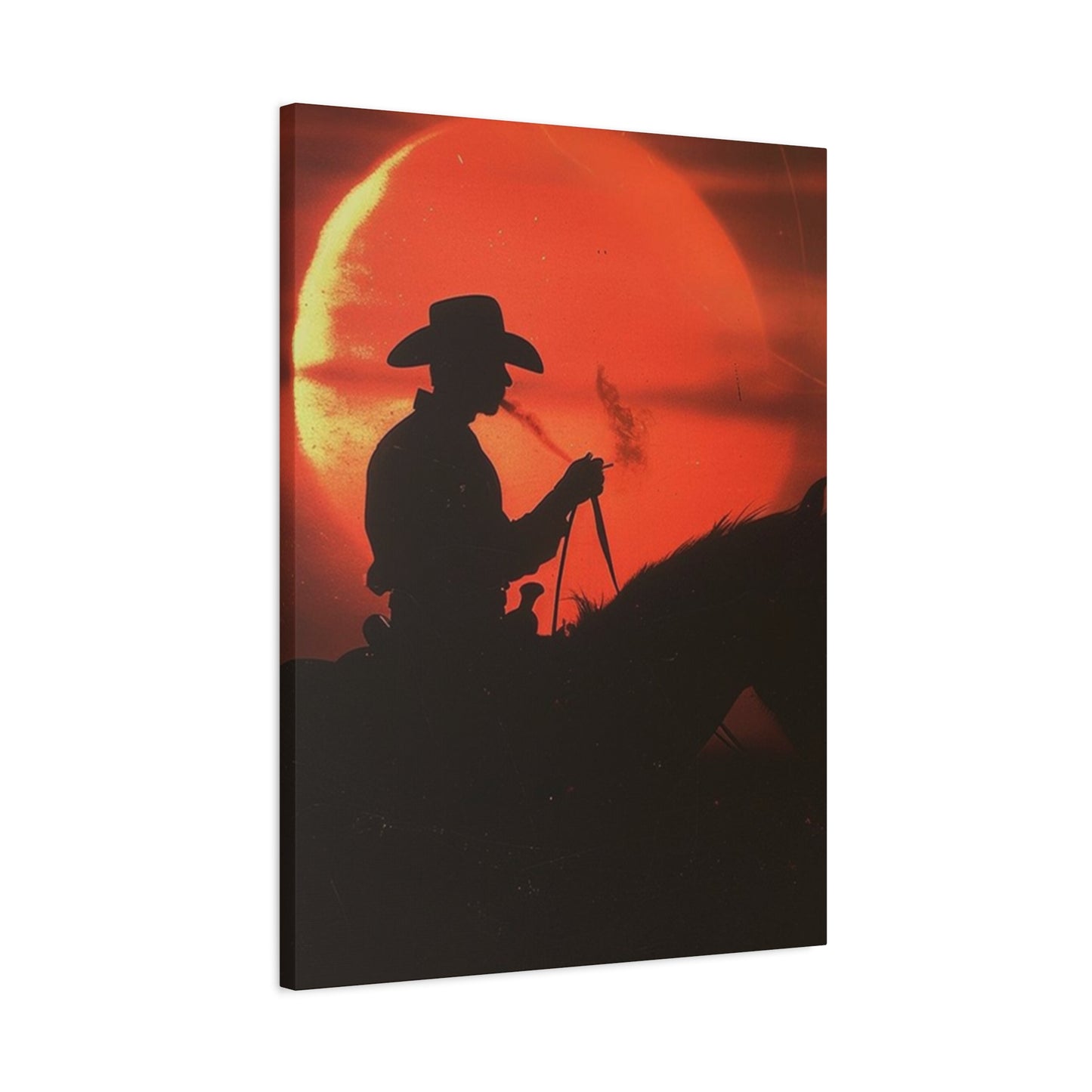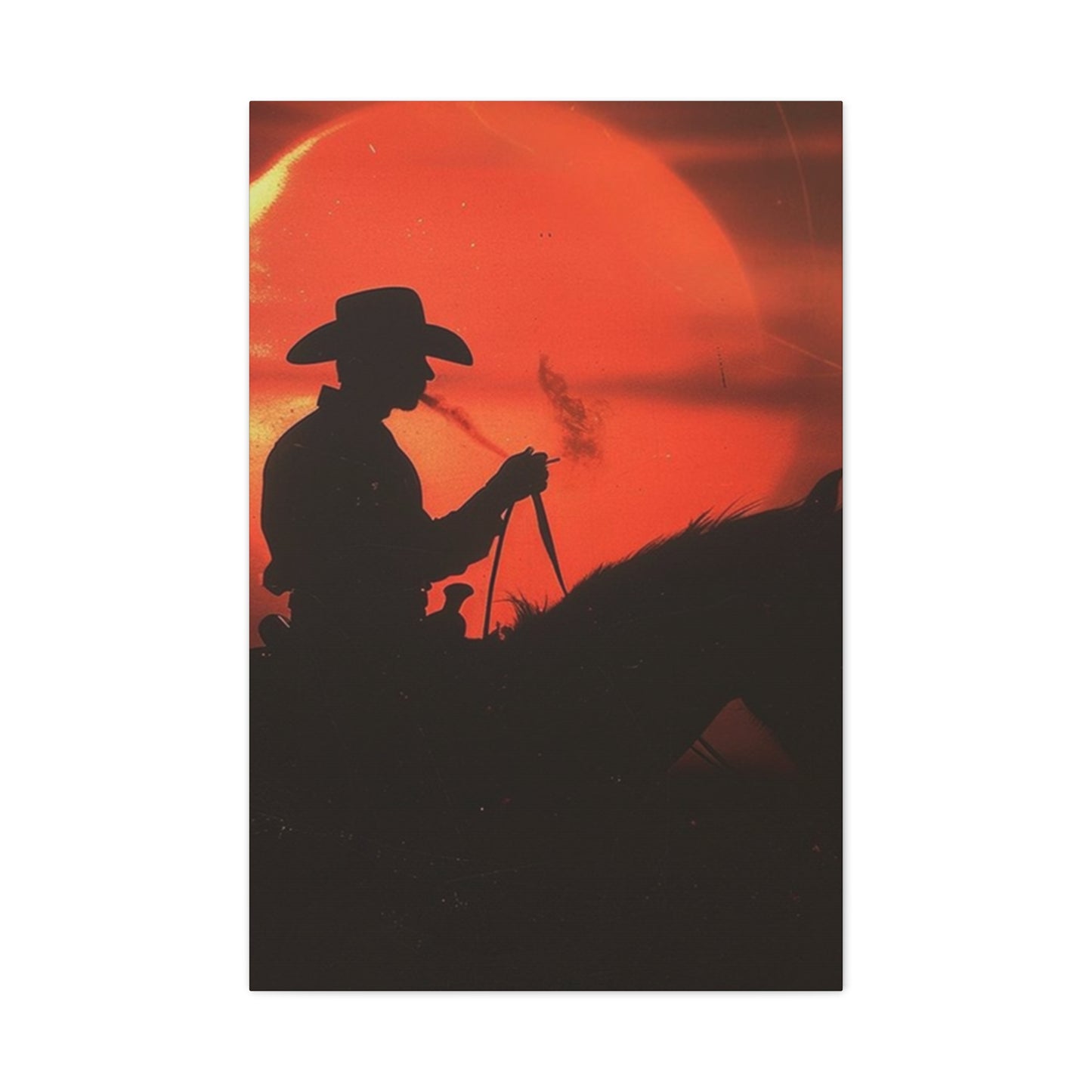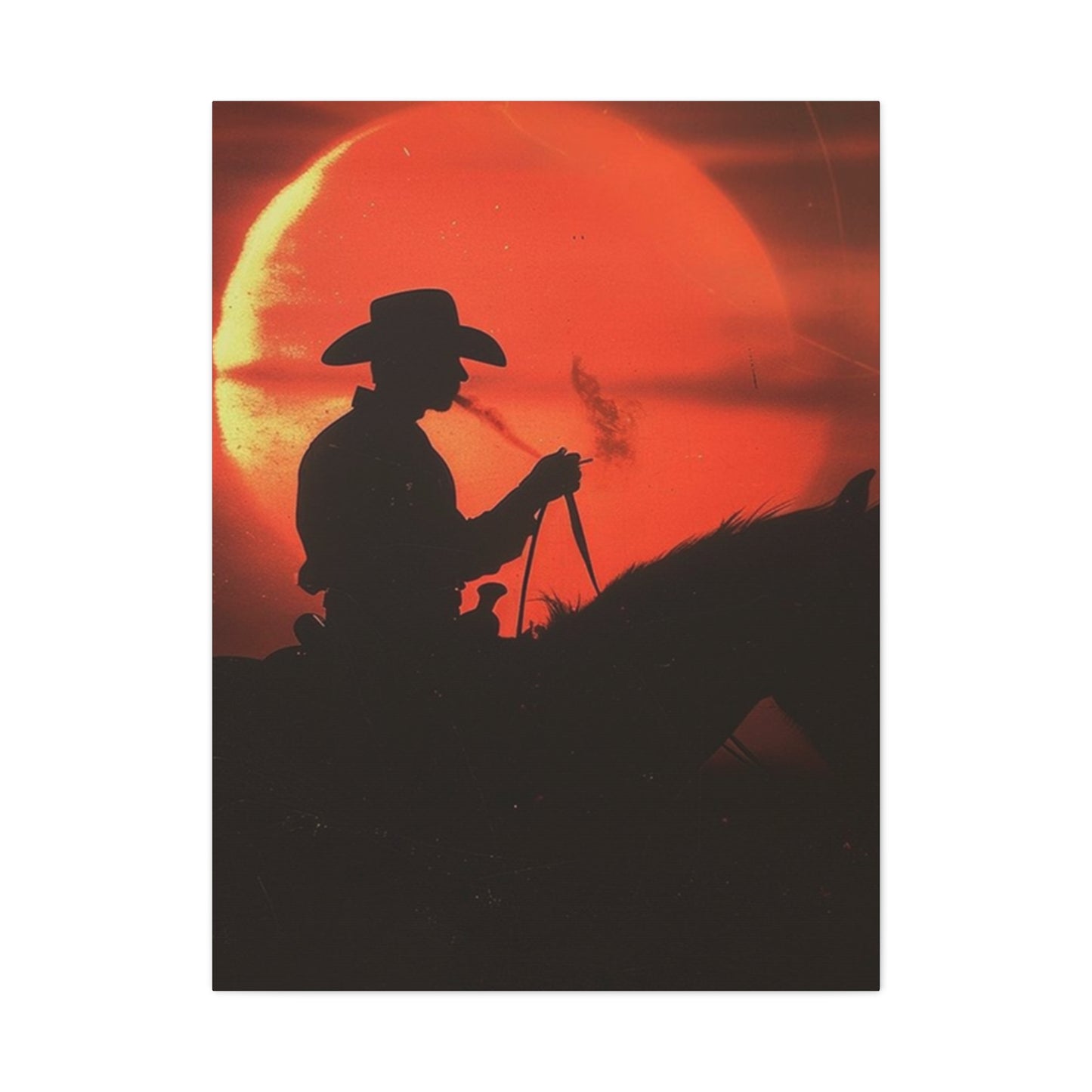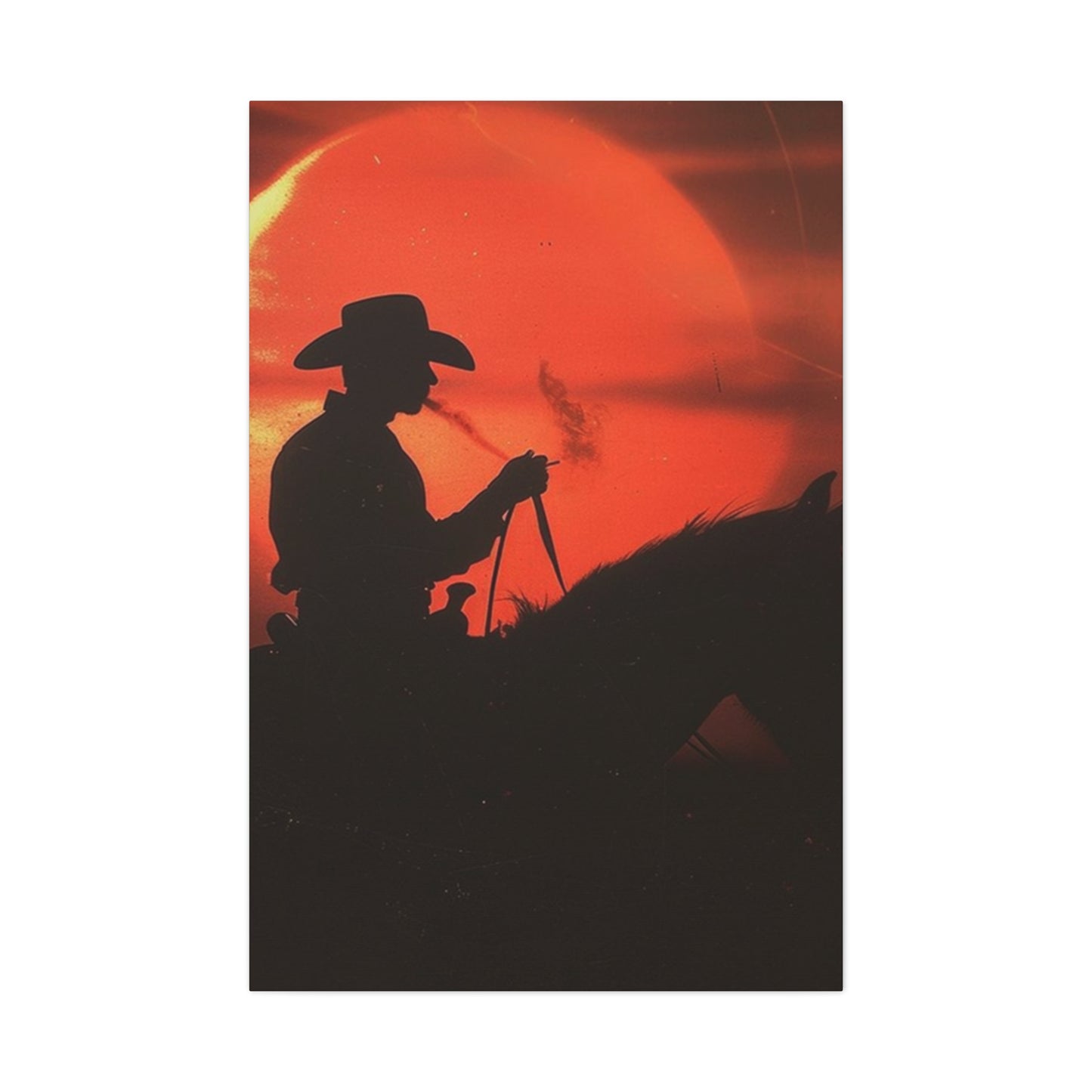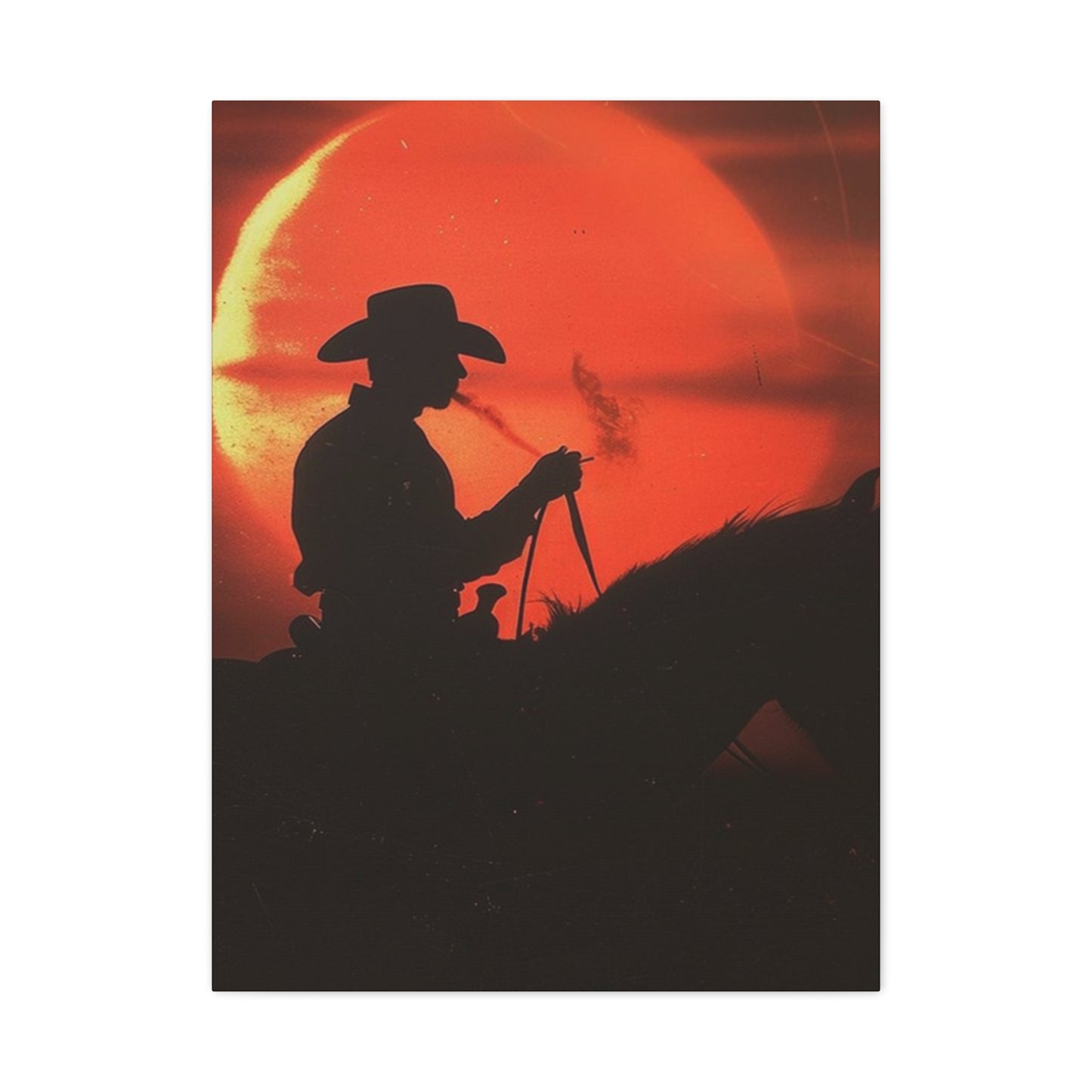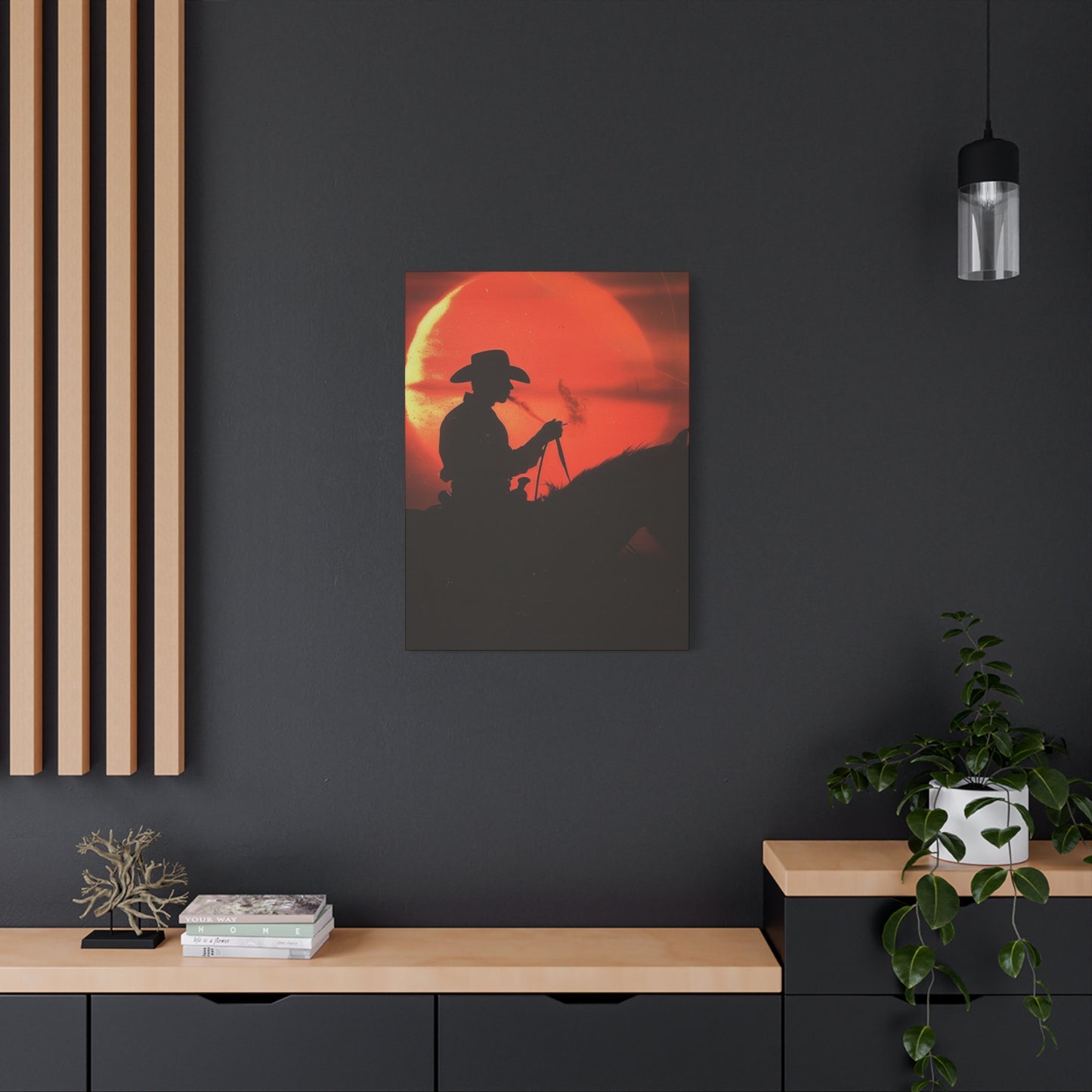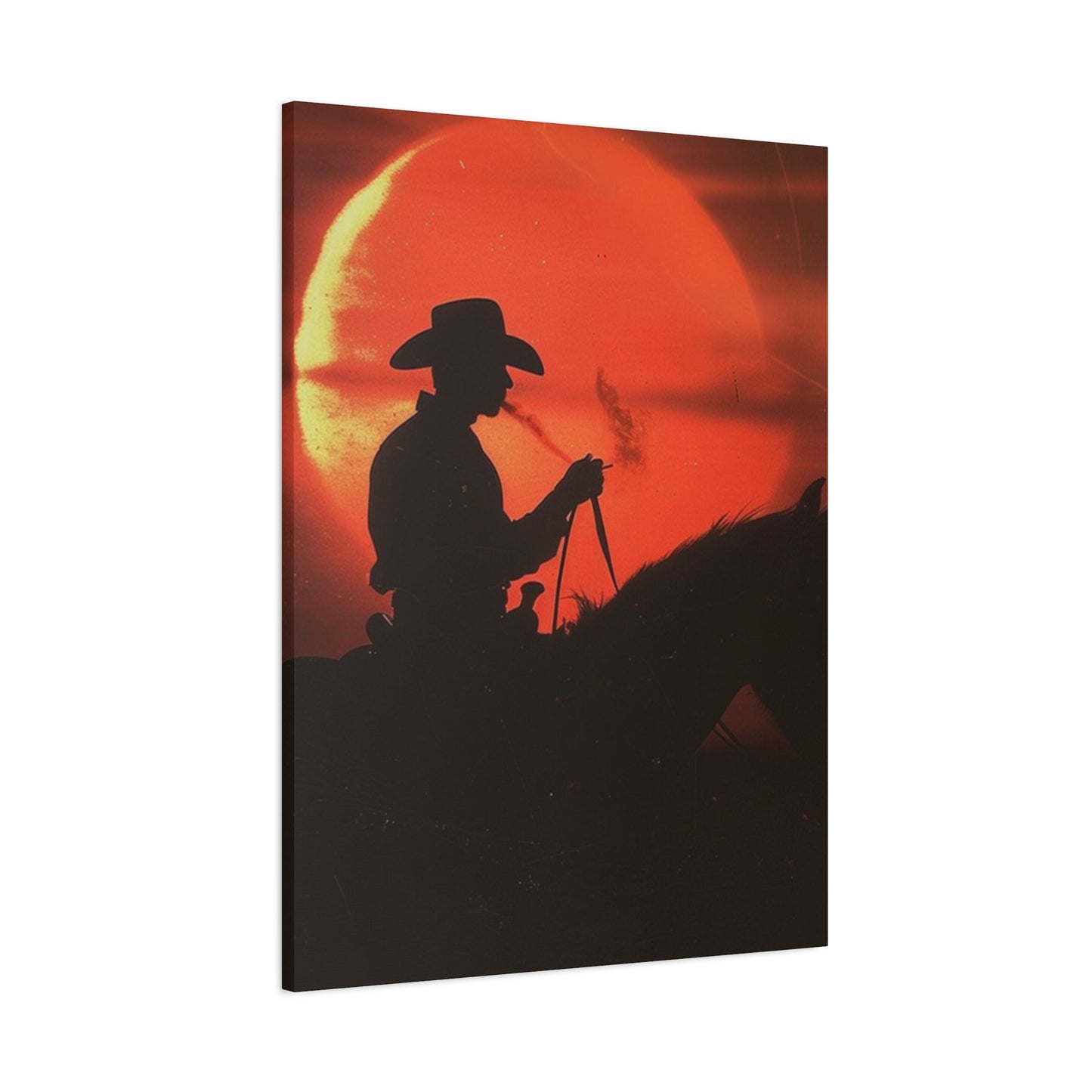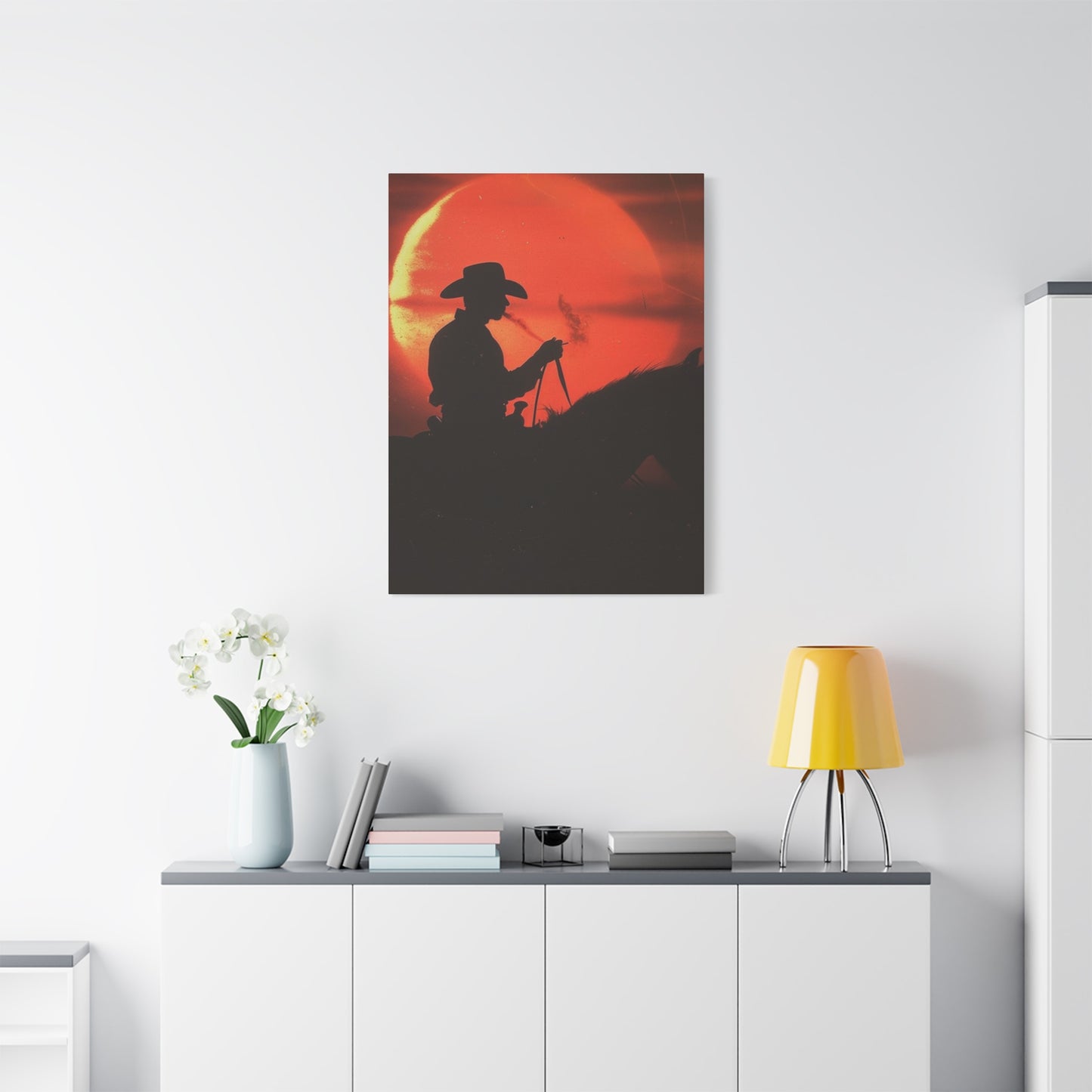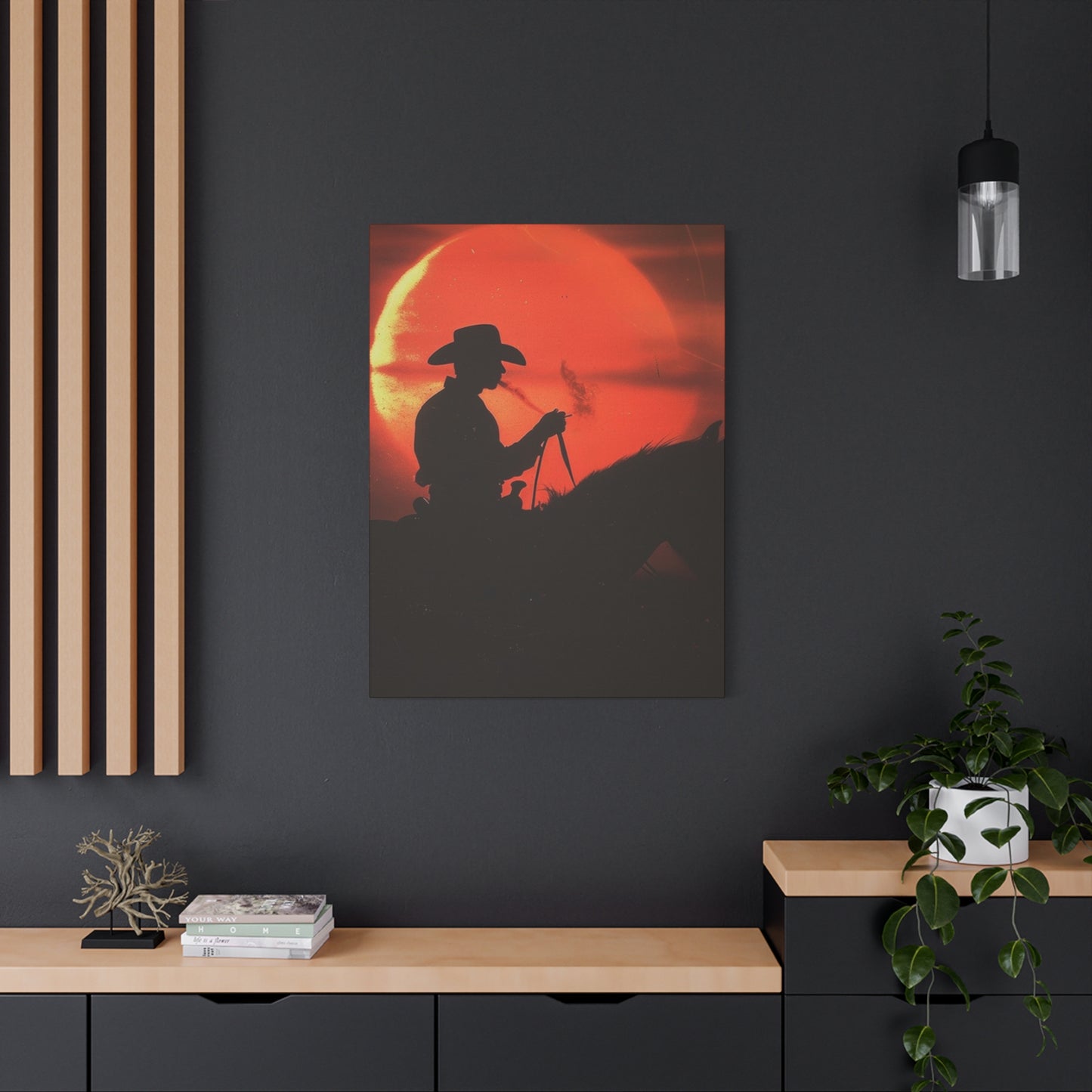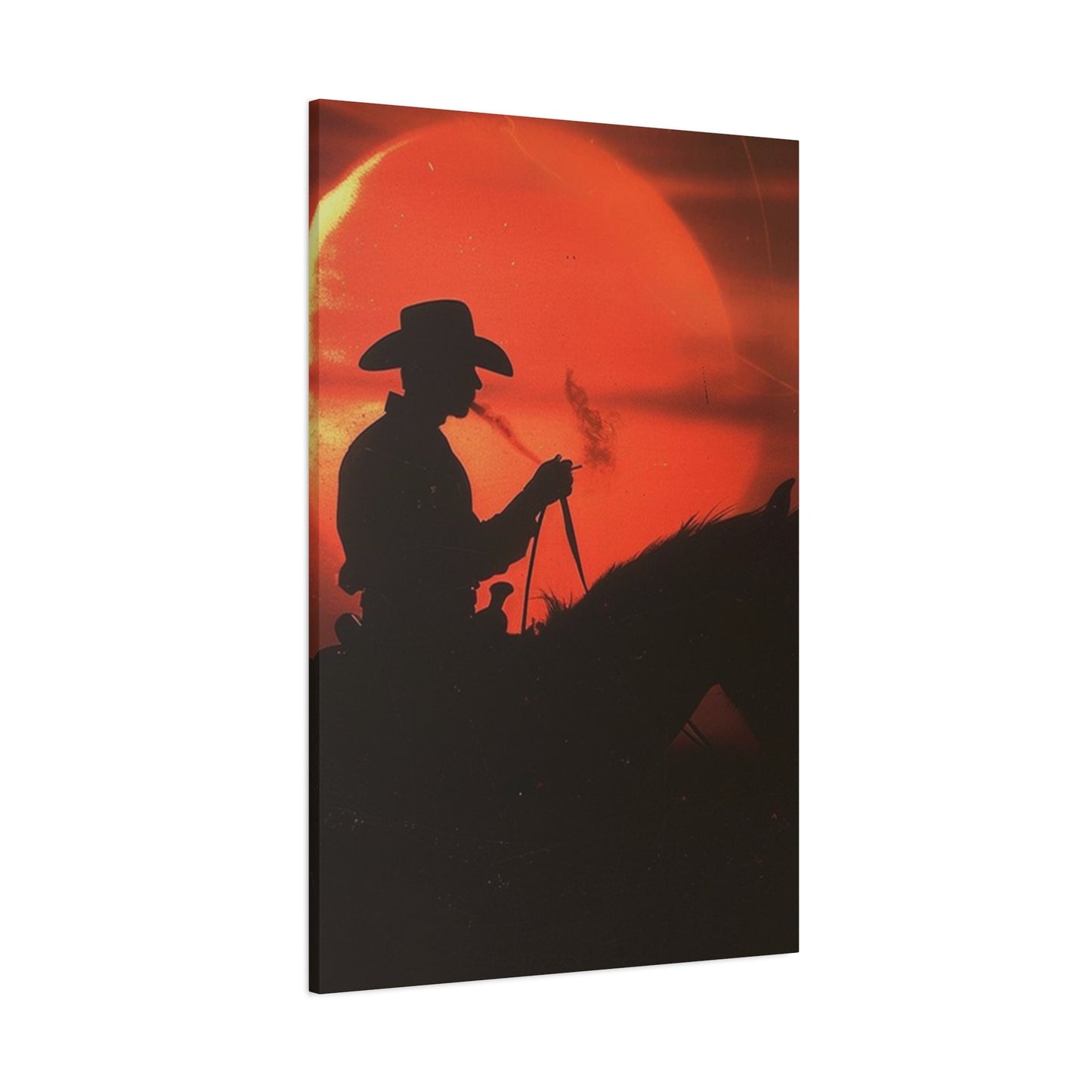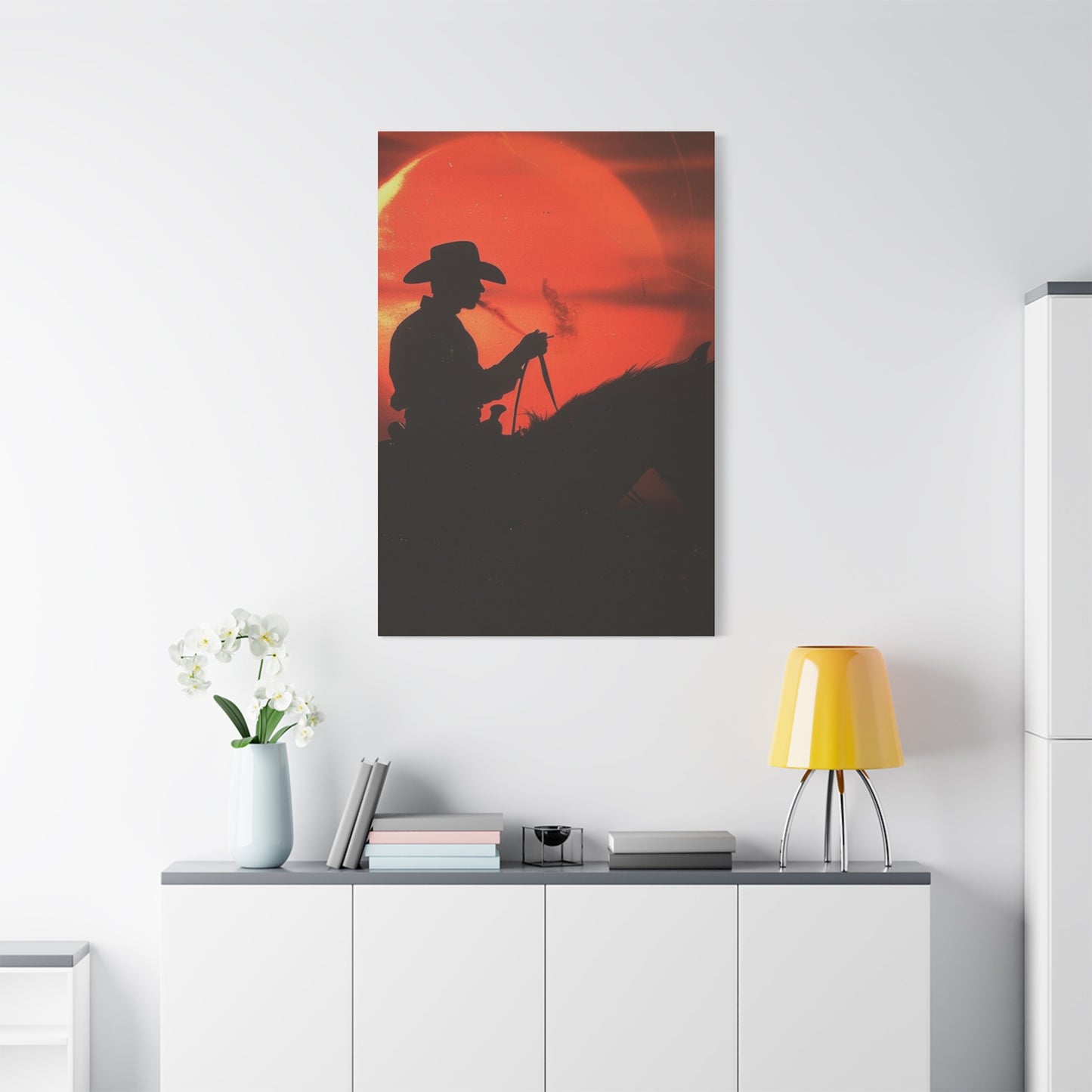Cowboy In Dawn Wall Art & Canvas Prints
Cowboy In Dawn Wall Art & Canvas Prints
Couldn't load pickup availability
Rustic Western Cowboy In Dawn Wall Art: Bringing Authentic Ranch Life Into Your Living Space
The allure of western imagery has captivated homeowners and interior designers for generations, with Cowboy In Dawn Wall Art representing one of the most sought-after thematic expressions in contemporary home decoration. This particular genre captures the essence of frontier life during those precious moments when sunlight first breaks over the horizon, casting golden rays across sprawling landscapes while a solitary figure on horseback begins another day of ranch work. The romantic appeal of such imagery transcends mere decoration, speaking to something deeper within the human spirit—a yearning for simpler times, connection with nature, and the rugged individualism that defined an entire era of American expansion.
When selecting pieces that feature cowboys at daybreak, collectors and enthusiasts discover they're not merely purchasing artwork but inviting a narrative into their homes. Each brushstroke or photographic capture tells stories of resilience, solitude, and the timeless relationship between humanity and the untamed wilderness. The dawn setting adds particular significance, symbolizing new beginnings, hope, and the perpetual cycle of life on the range where every sunrise brought fresh challenges and possibilities.
The Symbolic Resonance of Early Morning Ranch Scenes in Home Decoration
Morning hours on the frontier carried profound significance for those who lived and worked in western territories. Cowboys rising before daylight represented more than simple necessity; it embodied a philosophy of life where hard work, dedication, and respect for the land formed the cornerstone of existence. When you incorporate Cowboy In Dawn Wall Art into your residential or commercial space, you're channeling this ethos into your environment.
The psychological impact of dawn imagery has been studied extensively by environmental psychologists and interior design specialists. Images depicting early morning scenes tend to evoke feelings of renewal, optimism, and tranquility. The soft, warm lighting characteristic of sunrise creates an inviting atmosphere that makes spaces feel more welcoming and comfortable. When combined with the masculine, rugged elements of cowboy imagery, the result is a balanced aesthetic that appeals to both those who appreciate natural beauty and those drawn to historical narratives.
Beyond mere aesthetics, these pieces serve as conversation starters and focal points within rooms. Guests invariably find themselves drawn to well-executed western scenes, often sharing their own connections to ranch life, family histories of frontier settlement, or simply expressing admiration for the artistic skill required to capture such fleeting moments of beauty. This interactive quality makes such artwork particularly valuable for spaces designed to facilitate social interaction, such as living rooms, dining areas, or professional office reception spaces.
Distinguishing Quality Characteristics in Western Sunrise Artwork Pieces
Not all depictions of cowboys at daybreak possess equal artistic merit or decorative value. Discerning collectors and homeowners should develop an eye for several distinguishing characteristics that separate exceptional pieces from mediocre reproductions. The treatment of light stands paramount among these considerations. Authentic dawn possesses a unique quality—neither the harsh brightness of midday nor the deep amber of sunset, but rather a delicate, almost ethereal glow that gradually strengthens as minutes pass.
Superior Cowboy In Dawn Wall Art demonstrates mastery in rendering this transitional lighting. Look for pieces where the artist has successfully captured the interplay between remaining darkness and emerging light, where shadows still linger in valleys while hilltops catch the first rays of sunshine. The color palette should feature subtle gradations of purple, pink, orange, and gold, blending seamlessly across the sky rather than appearing as distinct, separated bands of color.
Compositional balance represents another critical factor. The cowboy figure should be positioned thoughtfully within the frame, neither dominating the scene entirely nor appearing lost within an overwhelming landscape. The rule of thirds, a fundamental principle in visual arts, often guides placement of the primary subject. Exceptional pieces create a natural flow that guides the viewer's eye through the composition, perhaps starting with the cowboy and horse, moving across the landscape features, and finally settling on the emerging sun or the vast sky beyond.
Attention to anatomical accuracy and period-appropriate details further distinguishes quality work. Horses should display correct proportions and musculature, while tack, clothing, and equipment should reflect genuine historical items rather than Hollywood romanticizations. Saddles, bridles, chaps, hats, and other elements should appear worn and functional rather than pristine and decorative, conveying the authentic lived experience of working ranch hands rather than staged performances.
Diverse Artistic Mediums for Capturing Cowboys During Sunrise Hours
The choice of medium significantly influences the overall impact and appropriateness of Cowboy In Dawn Wall Art for different spaces and design schemes. Oil paintings remain the traditional choice for capturing western scenes, offering rich texture, depth, and luminosity that other mediums struggle to match. The slow-drying nature of oils allows artists to blend colors seamlessly, creating those subtle atmospheric effects so crucial to convincing dawn representations. Additionally, oil paint can be applied in varying thicknesses, enabling artists to create physical texture that adds dimensional interest to the work.
Watercolor presents an interesting alternative, particularly well-suited to capturing the ephemeral, translucent quality of early morning light. The medium's inherent transparency allows underlying layers to show through subsequent applications, mimicking the way dawn light gradually builds in intensity. Skilled watercolorists can achieve stunning atmospheric effects, rendering mist rising from valleys or the soft glow of clouds catching first light with remarkable delicacy. However, watercolors require more careful handling and framing to prevent fading and damage over time.
Acrylic paints offer versatility and durability, making them popular among contemporary western artists. While lacking some of oil's luminous depth, acrylics dry quickly, resist fading, and can be applied in ways that mimic either watercolor transparency or oil paint opacity. Many modern artists appreciate acrylics for their forgiving nature and wide range of available colors, allowing for both realistic renderings and more interpretive, stylized approaches to cowboy subjects.
Photography has emerged as a significant medium for western sunrise imagery, with talented photographers capturing authentic moments as they unfold across working ranches. These pieces offer documentary value alongside aesthetic appeal, presenting viewers with genuine glimpses into contemporary ranch life or carefully staged recreations of historical scenarios. High-quality photographic prints, particularly those using archival papers and inks, provide excellent longevity and detail that painted mediums sometimes cannot achieve.
Digital artwork and mixed media approaches represent the cutting edge of western art, where traditional painting techniques merge with modern technology. Artists may begin with photographs or digital sketches, then manipulate and enhance them using software before sometimes adding physical elements like texture mediums or actual materials like leather, rope, or weathered wood. These hybrid pieces appeal particularly to those seeking something unique and contemporary while maintaining thematic connections to western heritage.
Color Palette Considerations for Dawn-Themed Cowboy Artwork Selection
The colors dominating Cowboy In Dawn Wall Art significantly influence how these pieces integrate within existing interior design schemes. Dawn naturally presents a cooler overall palette than sunset, with the warm oranges and reds tempered by lingering night blues, purples, and grays. This cooler tendency makes dawn-themed pieces generally more versatile than their sunset counterparts, working harmoniously with a broader range of interior color schemes.
Rooms decorated in neutral tones—beiges, tans, grays, and whites—provide an ideal backdrop for western dawn artwork. The subtle colors in the sky and landscape won't compete with or overwhelm the existing palette but instead add measured warmth and visual interest. In such spaces, the artwork becomes a controlled injection of color that enlivens without dominating, maintaining the serene, uncluttered aesthetic that neutral schemes typically aim to achieve.
For spaces featuring warmer color schemes with earth tones like terracotta, rust, deep browns, and golden yellows, Cowboy In Dawn Wall Art creates beautiful resonance. The warm highlights in dawn-lit clouds and the golden backlighting on the cowboy figure echo and reinforce the existing palette while introducing cooler complementary tones that prevent the space from feeling too heavy or monochromatic. This creates visual depth and sophistication that single-temperature palettes often lack.
Interestingly, dawn-themed western art also works effectively in contemporary spaces featuring cooler palettes dominated by blues, greens, and grays. The cooler portions of the dawn sky harmonize with these colors, while the warm accents provide necessary balance and prevent the space from feeling cold or sterile. This unexpected compatibility makes such artwork valuable for bridging seemingly incompatible design styles, allowing homeowners to honor western heritage within decidedly modern aesthetic frameworks.
When selecting specific pieces, consider how the artwork's dominant colors will interact with your space's largest elements—wall colors, flooring, and major furniture pieces. The artwork should either complement these elements through harmonic color relationships or provide deliberate contrast that creates visual excitement without clashing. Bringing paint samples or fabric swatches when shopping for artwork helps ensure compatibility before making significant purchases.
Optimal Room Placement Strategies for Western Dawn Artwork Display
Where you position Cowboy In Dawn Wall Art within your home or office dramatically affects its impact and your daily interaction with the piece. Living rooms represent the most common location for substantial artwork, offering ample wall space and serving as the primary area where family and guests congregate. In this setting, consider placing dawn-themed pieces above seating areas where they'll be easily visible during conversation and relaxation. The uplifting, hopeful qualities of sunrise imagery make these spaces feel more welcoming and positive.
The height at which you hang artwork matters considerably. Industry standard suggests positioning pieces so their center point falls approximately 57 to 60 inches from the floor—the average human eye level. However, this guideline requires adjustment based on ceiling height and furniture placement. When hanging art above furniture, maintain 6 to 12 inches of space between the furniture top and the artwork's bottom edge to create visual connection while preventing the piece from appearing to float disconnected from its surroundings.
Bedrooms benefit particularly from dawn imagery, as the hopeful, renewing symbolism aligns perfectly with the room's purpose as a place of rest and rejuvenation. Positioning Cowboy In Dawn Wall Art opposite the bed means it becomes one of the first things you see upon waking—a subtle psychological boost that sets a positive tone for the day ahead. Alternatively, placement above the headboard creates a thematic statement about rest and renewal, though this positioning limits your ability to view the piece from within the bed itself.
Home offices and studies represent ideal locations for western dawn scenes, where the imagery subtly reinforces qualities like dedication, independence, and perseverance—attributes cowboys embodied and that remain valuable in professional contexts. The calm, focused quality of a cowboy beginning his day's work parallels the mental state conducive to productive work. Additionally, the natural elements and open spaces depicted provide mental respite from the often confined, screen-dominated nature of modern work environments.
Dining rooms benefit from artwork that facilitates conversation and creates atmosphere conducive to gathering. Western scenes naturally encourage storytelling and sharing, making them excellent choices for these spaces. The morning theme adds appropriateness for rooms used for breakfast and brunch, though the imagery remains equally suitable for evening meals, providing a counterpoint to the day's end with reminders of beginnings and cycles.
Entryways and foyers make strong statements when featuring Cowboy In Dawn Wall Art, immediately communicating something about the homeowner's values, interests, and aesthetic preferences to arriving guests. These transitional spaces benefit from imagery that establishes mood and theme for the rest of the home. Dawn scenes work particularly well here, symbolically welcoming people into your space with the same sense of new beginning that each sunrise represents.
Size and Scale Considerations for Maximum Visual Impact Creation
Selecting appropriately sized artwork represents one of the most common challenges homeowners face when decorating. Too small, and pieces disappear against expansive walls, appearing timid and insignificant. Too large, and they overwhelm the space, making rooms feel cramped and unbalanced. For Cowboy In Dawn Wall Art, these considerations carry particular weight given the expansive landscapes and open spaces typically depicted.
For standard residential rooms with 8 to 9-foot ceilings, artwork measuring 24 by 36 inches or 30 by 40 inches typically provides sufficient presence to anchor a wall without overwhelming the space. These dimensions work well above sofas, beds, or console tables. When furniture sits below the artwork, the piece's width should ideally measure between two-thirds and three-quarters the width of the furniture below. This proportion creates visual harmony and connection between the artwork and furnishings.
Larger walls, particularly those in great rooms, lofts, or homes with vaulted ceilings, demand correspondingly larger artwork to maintain proper scale. Pieces measuring 48 by 72 inches or even larger may be necessary to prevent them from appearing insignificant against vast wall expanses. In such spaces, Cowboy In Dawn Wall Art offers particular advantage, as expansive landscape scenes suit large formats naturally. The wide-open spaces and sweeping vistas characteristic of western landscapes translate beautifully to oversized presentations, allowing viewers to feel immersed in the scene.
Gallery walls present an alternative approach, combining multiple smaller pieces to fill space and create visual interest. When taking this approach with western dawn themes, consider creating a cohesive collection that maintains stylistic consistency—perhaps multiple scenes from the same artist, or photographs and paintings all depicting morning ranch activities. Vary sizes and orientations (mixing horizontal and vertical pieces) while maintaining consistent framing materials and matte colors to create unity within diversity.
Unusually shaped walls—those with architectural features like fireplaces, built-in shelving, or angled ceilings—require creative approaches. Vertical pieces work well on narrow wall sections flanking fireplaces, while horizontal panoramic formats suit spaces above long, low furniture arrangements. For walls with sloped ceilings or irregular shapes, consider custom framing or arrangement strategies that acknowledge and work with these architectural features rather than fighting against them.
Framing Choices That Enhance Western Dawn Artwork Presentation
The frame surrounding Cowboy In Dawn Wall Art significantly influences the piece's overall impact and how successfully it integrates within your space. Frames serve multiple purposes beyond simple protection and mounting—they create boundaries that focus attention, add decorative interest, and provide transition between the artwork and its surrounding environment. For western-themed pieces, frame selection requires balancing authenticity with contemporary interior design principles.
Traditional barnwood frames remain popular for western artwork, offering genuine connection to the rural settings depicted. These frames feature actual weathered wood salvaged from old barns, fences, or ranch buildings, bearing the marks of time—nail holes, worn edges, sun-fading, and surface texture that speaks to decades of exposure. Such frames powerfully reinforce the authentic, historical nature of cowboy imagery. However, their rustic appearance limits their suitability to certain design schemes, working best in homes embracing farmhouse, rustic, or traditional southwestern styles.
Distressed wood frames present a middle ground, offering aged appearance without actual antique materials. These commercially produced frames undergo various treatments to simulate wear—sanding, staining, glazing, and strategic paint removal that creates controlled weathering effects. The result looks authentically aged while providing consistent quality, sizing, and durability that genuine salvaged materials may lack. These frames work well across broader design styles, bringing rustic warmth to spaces that might feel too polished with pristine framing.
Clean-lined wooden frames in natural or stained finishes suit contemporary and transitional spaces where overtly rustic framing would clash with prevailing aesthetics. Simple profiles in walnut, oak, maple, or cherry provide sufficient substance to support and elevate the artwork without competing for attention or appearing incongruous with modern furnishings. This approach allows the Cowboy In Dawn Wall Art to shine while the frame discreetly performs its supporting role.
Metal frames, particularly those in bronze, copper, or iron finishes, offer interesting possibilities for western artwork. The industrial quality of metal connects thematically to ranch equipment—horseshoes, spurs, branding irons, and other metal implements integral to cowboy life. Wide profiles in hammered copper or oil-rubbed bronze can be stunning, adding substantial presence and creating luxurious presentations suitable for formal spaces. Narrower metal profiles work in more contemporary settings, providing clean definition without heavy visual weight.
The matte (mat board) surrounding the artwork within the frame deserves equal consideration. Neutral tones—cream, tan, warm gray—typically serve western scenes well, neither competing with the artwork's colors nor introducing jarring contrast. Some framers recommend double matting, where two layers of mat board in complementary colors create dimensional interest and additional color harmonization opportunities. The inner mat might pick up a color from the artwork—perhaps a dusty blue from the dawn sky—while the outer mat remains neutral.
Certain pieces benefit from being presented without matting, extending the artwork directly to the frame's inner edge. This approach, called float mounting when done properly, creates more contemporary presentation and allows maximum visual impact from the artwork itself. It works particularly well for photographs and paintings with finished edges, though oil paintings sometimes benefit from a small reveal where the canvas edge remains visible, showing the work's three-dimensional reality.
Lighting Techniques That Bring Cowboy Scenes to Life
Proper illumination transforms good artwork into breathtaking focal points, and Cowboy In Dawn Wall Art particularly benefits from thoughtful lighting design. These pieces depict scenes inherently about light—the drama of darkness yielding to day, the long shadows of early morning, the golden rim lighting surrounding figures and landscape features. How you light such artwork dramatically affects whether it reaches its full expressive potential or falls flat.
Picture lights mounted directly to the frame or wall above represent the traditional approach, providing focused illumination from above that mimics natural overhead lighting. Modern LED picture lights have revolutionized this category, offering bright, color-accurate illumination without the heat output that once threatened artwork preservation. These fixtures come in various finishes—brass, bronze, chrome, black—allowing coordination with frame materials and room decor. Adjustable models let you direct light precisely where needed, accommodating both horizontal and vertical compositions.
Track lighting offers flexibility, allowing multiple fixtures on a single track that can be positioned and aimed at different artworks throughout a room. This approach works particularly well in spaces featuring several pieces or when you anticipate changing displays periodically. The directional nature of track fixtures enables precise highlighting while minimizing unwanted glare on glass or glossy surfaces. Selecting fixtures with narrow beam spreads prevents light from spilling beyond the intended target, maintaining focus on the artwork.
Recessed ceiling canisters equipped with artwork-specific bulbs and trims provide clean, unobtrusive lighting that maintains contemporary aesthetic sensibilities. Wall-washing techniques, where light grazes the wall from ceiling-mounted fixtures, can beautifully illuminate artwork while also enhancing the entire wall surface. This approach works particularly well for gallery walls or spaces featuring multiple pieces at various heights.
Regardless of which lighting approach you choose, color temperature matters significantly. The Kelvin rating of your light sources should fall between 3000K and 3500K—warm white territory that complements the warm tones naturally present in dawn scenes while avoiding the yellow cast that lower temperatures introduce or the harsh, bluish quality of cooler temperatures. Color Rendering Index (CRI) should exceed 90, ensuring colors appear accurate rather than distorted by poor-quality light sources.
Position lights to avoid glare, the reflected brightness that obscures rather than reveals artwork. For framed pieces behind glass, experiment with lighting angles to find the sweet spot where the artwork is well-illuminated but reflections don't create bright spots that prevent comfortable viewing. Sometimes slightly offset positioning—where the light comes from an angle rather than directly perpendicular to the wall—eliminates troublesome reflections.
Natural light requires careful management, as while it beautifully illuminates artwork, sustained exposure causes fading and deterioration. If positioning Cowboy In Dawn Wall Art where direct sunlight strikes it, consider UV-filtering glazing (glass or acrylic) that blocks harmful ultraviolet rays while allowing visible light to pass through. Window treatments—cellular shades, shutters, or UV-filtering films—provide additional protection during peak sunlight hours without requiring you to keep spaces perpetually darkened.
Authenticating and Evaluating Western Art Pieces Before Purchase
The marketplace for western-themed artwork spans enormous quality and price ranges, from mass-produced prints selling for double-digit prices to original paintings commanding five or even six figures. For those investing in Cowboy In Dawn Wall Art, understanding how to evaluate pieces and authenticate their origin and quality prevents disappointment and ensures money spent corresponds to value received.
Original paintings represent the apex of the art market, with each piece being genuinely unique—a one-of-one creation that can never be exactly replicated. When considering original western art, research the artist thoroughly. Established artists with gallery representation, exhibition history, and critical recognition command premium prices justified by their skill, reputation, and the investment potential their works offer. Emerging artists may offer more accessible price points while still providing original artwork that brings unique presence to your space.
Examine original paintings in person whenever possible. Look for confident brushwork, successful color harmonization, convincing rendering of light and atmospheric effects, and compelling composition. The painting should demonstrate technical skill—proper drawing, anatomy, perspective—while also conveying emotional resonance that transcends mere technical competence. Signs of the artist's hand—visible brushstrokes, areas of thick impasto, subtle variations in color mixing—confirm the work's original nature and add to its appeal.
Limited edition prints occupy middle ground between mass-produced reproductions and original artwork. Artists produce these prints in controlled, numbered quantities—perhaps 100 or 500 copies—after which the printing plates or files are destroyed, ensuring scarcity that maintains value. Each print in the edition should be signed and numbered by the artist (notated as "#/# "—for instance, 47/250 means the 47th print in an edition of 250). Lower numbers don't inherently possess more value than higher ones, though some collectors prefer them psychologically.
Giclée printing represents the quality standard for fine art reproductions, using high-resolution digital files and specialized inkjet printers that spray microscopic dots of archival ink onto premium papers or canvas. The term "giclée" (French for "spray") distinguishes these museum-quality prints from standard poster-type reproductions. Examine giclée prints for fine detail, smooth color gradations without visible banding, and overall sharpness. Printed on canvas and gallery-wrapped around stretcher bars, giclée reproductions can appear remarkably similar to original paintings from even short distances.
Canvas transfers represent another reproduction category, where images are transferred onto canvas through various means, sometimes with gel mediums or other substances applied to create surface texture mimicking brushstrokes. While these can be visually appealing, they lack the genuine artist's hand present in original paintings. They're best understood as decorative pieces rather than art investments, appropriately priced substantially below originals and legitimate limited editions.
Provenance documentation—the history of an artwork's ownership and creation—adds value and authenticity assurance. Certificates of authenticity signed by the artist, gallery purchase receipts, exhibition catalogs showing the piece, and previous sale records all contribute to establishing legitimate provenance. For significant purchases, these documents should be preserved carefully and passed along with the artwork should you eventually sell it.
Caring for and Preserving Western Artwork Through the Years
Proper maintenance ensures your Cowboy In Dawn Wall Art remains vibrant and undamaged for decades, potentially becoming a cherished heirloom passed through generations. Different mediums require specific care approaches, though several universal principles apply across all artwork categories.
Environmental control represents the foundation of art preservation. Temperature fluctuations cause materials to expand and contract, potentially leading to canvas stretching, paint cracking, or frame warping. Ideally, maintain indoor temperatures between 65 and 75 degrees Fahrenheit with minimal seasonal variation. Humidity matters equally, with 45 to 55 percent relative humidity representing the target range. Excessive humidity encourages mold growth and paper deterioration, while very dry conditions can cause materials to become brittle and crack.
Direct sunlight poses perhaps the greatest threat to artwork longevity. Ultraviolet radiation breaks down pigments, causing colors to fade sometimes dramatically. Even pieces displayed away from direct sun exposure experience gradual light damage if hung in bright rooms over extended periods. Beyond UV-filtering glazing, consider rotating displayed artwork periodically—perhaps changing pieces seasonally—to distribute light exposure across your collection rather than concentrating it on a few permanently displayed favorites.
Dust accumulation dulls artwork appearance and can attract moisture that encourages mold. Clean frames regularly with soft, dry cloths, wiping gently to avoid scratching finishes. For the artwork itself, approach cleaning cautiously. Framed pieces behind glass can have the glass cleaned with standard glass cleaner applied to the cloth (never sprayed directly on the frame, where it might seep between glass and artwork). For unglazed paintings or works on canvas, use only dry soft brushes specifically designed for art conservation, gently sweeping away dust without contacting the painted surface with your hands.
Oil paintings naturally develop subtle cracking patterns called craquelure as they age—a normal process that many collectors appreciate as evidence of authenticity and age. However, if paintings develop more serious issues—flaking paint, tears in canvas, separation from stretchers—seek professional conservation services rather than attempting repairs yourself. Similarly, works on paper showing water stains, foxing (brown spots caused by mold or chemical reactions), or tears require expert restoration to prevent further damage and reverse existing deterioration where possible.
Framing quality directly impacts preservation. Acid-free materials—mat boards, mounting boards, backing boards—prevent chemical reactions that discolor and degrade artwork over time. Proper spacing between the artwork and glazing (accomplished through mat boards or spacers) prevents condensation-related problems where moisture trapped against the art surface promotes mold growth. Museum-quality framing, while more expensive initially, significantly extends artwork lifespan and maintains appearance.
When moving or transporting artwork, handle pieces carefully to prevent impact damage. Always carry framed pieces by holding the frame at opposite corners or along the sides—never by grasping only the top edge, which risks the piece slipping from your grip. For valuable pieces, consider professional art handling services when moving to new homes, as movers experienced in art transport use specialized packing materials and techniques that prevent damage during transit.
Creating Cohesive Western-Themed Rooms Around Dawn Artwork
While a single striking piece of Cowboy In Dawn Wall Art can stand alone as a focal point, many homeowners prefer developing fuller thematic expressions where artwork serves as foundation for broader decorative schemes. Creating cohesive western-themed spaces requires balancing authentic elements with contemporary comfort, avoiding the trap of theme-park excess where spaces feel more like museum dioramas than livable homes.
Start with the artwork as inspiration, pulling colors, textures, and stylistic cues that inform other design decisions. If your chosen piece features a particular color palette—perhaps heavy on dusty blues and soft golds—echo these hues in throw pillows, blankets, or area rugs. This creates subliminal harmony where the artwork feels naturally integrated rather than arbitrarily placed.
Furniture selection significantly impacts whether western themes feel authentic or contrived. Avoid overly literal interpretations—you don't need wagon wheel coffee tables or furniture upholstered in cowhide, though these certainly remain options if aligned with your preferences. Instead, consider substantial wood pieces in darker finishes that evoke the hefty, handcrafted furniture found in historic ranch houses. Leather seating provides appropriate texture and durability while feeling period-appropriate without being costumey. Look for pieces with straightforward construction, visible joinery, and minimal ornamentation reflecting the practical mindset of frontier craftspeople.
Textiles offer opportunities to reinforce western themes while providing essential warmth and softness. Navajo-inspired patterns, Pendleton wool blankets, leather accent pillows, and natural fiber rugs ground spaces in southwestern tradition. Mix patterns carefully to avoid overwhelming busy-ness—perhaps a bold geometric rug paired with more subtle pillow patterns and solid-colored upholstery. Natural materials like cotton, wool, and leather not only look appropriate but also offer superior durability and aging characteristics compared to synthetic alternatives.
Architectural elements and finishes set the stage for successful western-themed rooms. Exposed wood beams, whether structural or decorative, immediately establish appropriate atmosphere. Wood plank walls or wainscoting, whether using new material or reclaimed barn siding, provide texture and warmth that painted drywall cannot match. Stone accents—fireplaces, accent walls, or partial height wainscoting—reference the natural landscape and building traditions of frontier settlements. For flooring, wide-plank hardwoods, particularly in hand-scraped or wire-brushed finishes that highlight grain and texture, prove both beautiful and durable.
Lighting fixtures contribute significantly to thematic atmosphere. Wrought iron chandeliers, pendant lights with bronze or copper finishes, and mission-style table lamps provide period-appropriate illumination while serving as decorative elements. Avoid overly ornate fixtures that read as Victorian or European; western aesthetic favors straightforward construction and visible craftsmanship. Consider fixtures incorporating materials like rawhide shades, antler elements (ethically sourced), or mica panels that diffuse light warmly.
Accessories and decorative objects allow personal expression while reinforcing themes. Vintage or reproduction ranch implements—branding irons, spurs, horseshoes—can be displayed as sculptural objects when arranged thoughtfully. Books about western history, horsemanship, or regional culture provide both decorative function when displayed on coffee tables or shelves and reading enjoyment. Plants suited to arid climates—cacti, succulents, or even sculptural branches in tall vases—bring living elements indoors while maintaining thematic consistency.
The Enduring Cultural Significance of Cowboy Imagery in Modern Society
The persistence of cowboy imagery in contemporary visual culture, including the enduring appeal of Cowboy In Dawn Wall Art, speaks to something deeper than mere nostalgia or historical interest. Despite the reality that ranch work today involves pickup trucks, ATVs, and satellite communications as much as horses and ropes, the mythologized cowboy continues representing powerful cultural values and aspirations that resonate across demographic boundaries.
The cowboy archetype embodies self-reliance and independence—qualities Americans particularly have long celebrated as central to national identity. The image of a lone rider facing the challenges of wilderness and weather without complaint resonates with modern audiences living in increasingly interconnected, bureaucratized society where individual agency sometimes feels diminished. The cowboy reminds us of a time—however mythologized—when personal capability and determination directly determined outcomes, when man measured his worth through his work and his word.
Connection to nature represents another powerful element of cowboy appeal in our predominantly urban, technology-saturated age. The typical cowboy existed in intimate relationship with natural cycles, reading weather in cloud formations, understanding animal behavior through close observation, and navigating by landscape features and celestial cues. As modern life increasingly occurs mediated through screens in climate-controlled environments, images of cowboys working in dawn light remind viewers of the natural world's beauty and power, offering vicarious connection to environments most will never directly experience.
The dawn setting particularly amplifies these themes. Sunrise symbolizes hope, renewal, and the eternal return of opportunity—each day presenting a fresh start regardless of yesterday's failures or difficulties. For the cowboy beginning his day's work as light breaks, dawn represented not abstract philosophical concept but daily reality. Every sunrise brought new tasks requiring attention, new chances to demonstrate competence and dedication. This association between cowboys and dawn creates artwork loaded with positive psychological associations that subtly influence viewers' emotional states.
The western genre also carries democratic implications that appeal to contemporary audiences. The frontier supposedly offered opportunities for advancement based on capability rather than inherited privilege or formal credentials. The best cowboy was the best rider, roper, and rancher, regardless of his origins. This meritocratic fantasy—only partially supported by historical reality—continues appealing to audiences believing in opportunity and advancement through effort and skill.
Interestingly, cowboy imagery has transcended its American origins, becoming globally recognized and adapted. International audiences from Japan to Germany to Australia embrace western aesthetic, often interpreting and combining it with local traditions to create hybrid expressions. This global appeal suggests cowboy imagery taps into universal human themes—the relationship between humans and nature, the challenges of physical work in harsh conditions, the loneliness and freedom of open spaces—that resonate across cultural boundaries.
Regional Variations in Western Art Styles and Subjects
While "western art" might seem like a unified category, significant regional variations exist reflecting the diverse geography, cultures, and histories of western North America. These differences influence subject matter, color palettes, stylistic approaches, and the types of Cowboy In Dawn Wall Art available to collectors based on regional artistic traditions.
Northern plains and Montana western art often emphasizes vast prairies, dramatic skies, and the particular quality of light found at higher latitudes. The landscape tends toward rolling grasslands rather than dramatic rock formations, with badlands and river valleys providing topographical interest. Cowboy figures in this tradition might appear particularly isolated, tiny against enormous skies, emphasizing the scale of the landscape and the human vulnerability within it. Color palettes tend toward cooler tones—sage greens, dusty blues, and weathered grays—reflecting the region's vegetation and frequent cloud cover.
Southwestern-style western art, centered in New Mexico, Arizona, and West Texas, features more dramatic landscape elements—mesas, buttes, saguaro cacti, and distinctive red rock formations. The light quality differs markedly from northern regions, with clearer atmosphere and more intense sunlight creating sharp shadows and brilliant highlights. Color palettes run warmer, with rust reds, burnt oranges, and golden yellows predominating. Cowboy subjects in southwestern art often share compositional space with indigenous peoples and Hispanic cultural elements, reflecting the region's complex multicultural heritage.
California and Pacific coastal western art incorporates elements less commonly found in heartland western imagery—Spanish mission architecture, oak savanna landscapes, and sometimes maritime elements where ranching met the ocean. The light quality on the California coast carries a distinctive soft quality, particularly in morning hours when fog and marine layer create atmospheric effects different from interior regions. Cowboy subjects might appear working cattle through oak groves or along coastal hills rather than the open prairie settings more typical of plains imagery.
Texas western art constitutes its own substantial category, reflecting both the state's outsized self-regard and its genuine historical significance in ranching heritage. Texas subjects might include longhorn cattle breeds, sprawling ranch headquarters, and landscape elements like prickly pear or mesquite. The cultural mythology of Texas—cowboy as heroic individualist, the ranch as kingdom, wide-open spaces as freedom—heavily influences artistic approaches and subject selection.
Mountain west imagery, encompassing Wyoming, Colorado, Idaho, and Montana, frequently incorporates dramatic peaks, alpine meadows, and forest elements into compositions. Cowboys might appear working in more varied terrain, driving cattle through aspen groves or along high mountain valleys. The dramatic topography provides compositional opportunities unavailable in flatter regions, with mountains framing dawn skies and creating interesting interplay between illuminated peaks and valleys still in shadow.
Understanding these regional traditions helps collectors select Cowboy In Dawn Wall Art that reflects particular geographic connections or aesthetic preferences. Someone with family ties to Montana might prefer the austere prairie aesthetic of northern plains art, while those drawn to dramatic color and landforms might gravitate toward southwestern interpretations. Some collectors appreciate regional variety, acquiring pieces representing different western traditions to create diverse, comprehensive collections.
Conclusion
One of the most common design challenges homeowners face involves incorporating traditional or rustic elements like Cowboy In Dawn Wall Art into predominantly contemporary living spaces. The perceived conflict between modern minimalism or mid-century aesthetics and rustic western imagery sometimes deters people from displaying artwork they genuinely love. However, thoughtful approaches can successfully bridge these stylistic divides, creating sophisticated, cohesive spaces that honor both contemporary design principles and traditional western art.
The key lies in treating the artwork as a deliberately chosen accent rather than requiring the entire space to adopt western themes. In predominantly contemporary rooms with clean lines, neutral colors, and minimal ornamentation, a striking piece of western artwork creates compelling contrast that enlivens the space without overwhelming it. The trick involves limiting overtly rustic elements to just the artwork and perhaps one or two carefully chosen accessories, preventing the space from reading as confused or unstylized.
Framing choices dramatically affect how successfully western art integrates into modern spaces. Eschew heavily rustic barnwood frames in favor of simpler profiles in natural wood or even sleek metal finishes. Black metal frames, for instance, provide crisp definition that feels decidedly contemporary while still respecting the artwork's subject matter. The contrast between modern framing and traditional subject creates visual tension—a hallmark of successful eclectic design that keeps spaces interesting and dynamic.
Share
